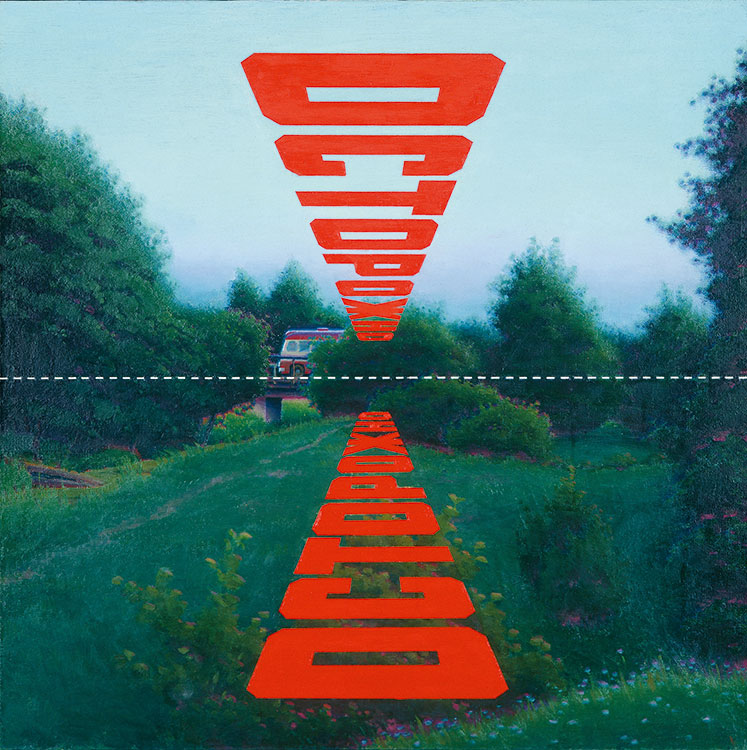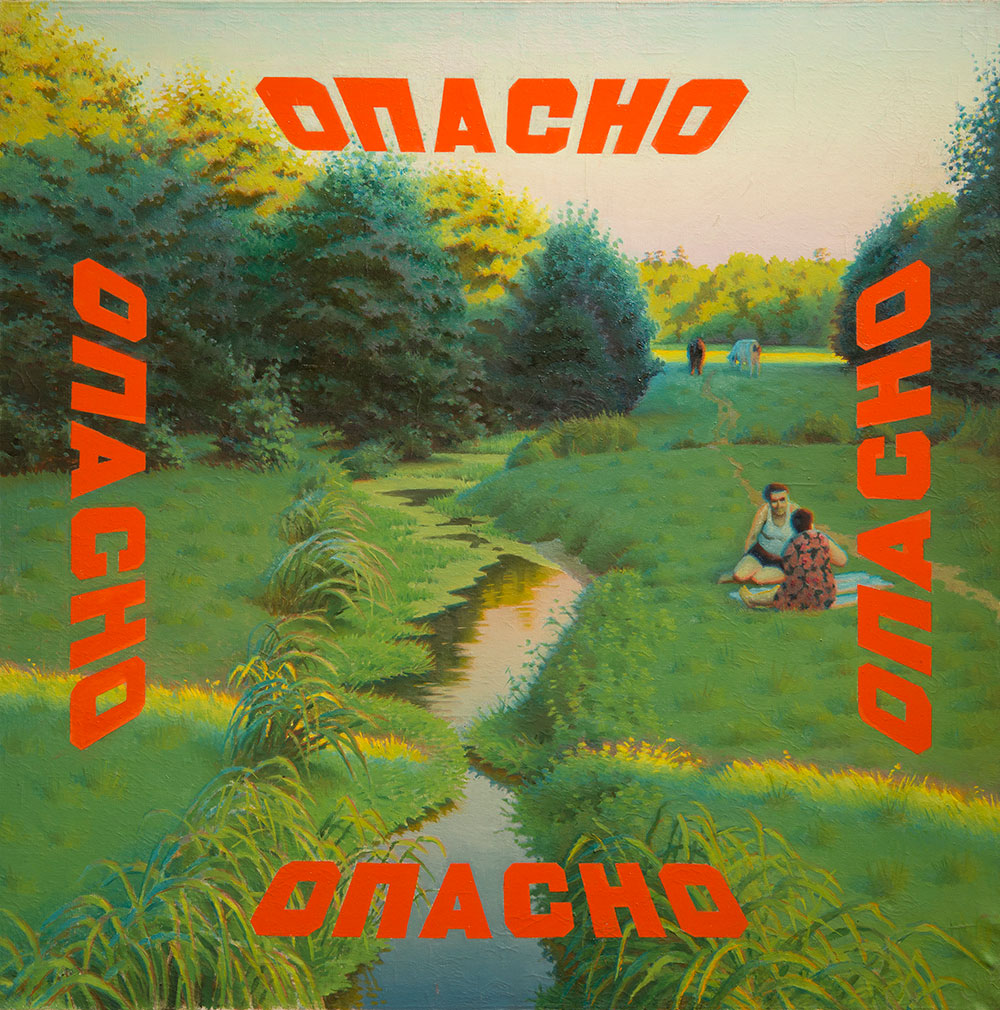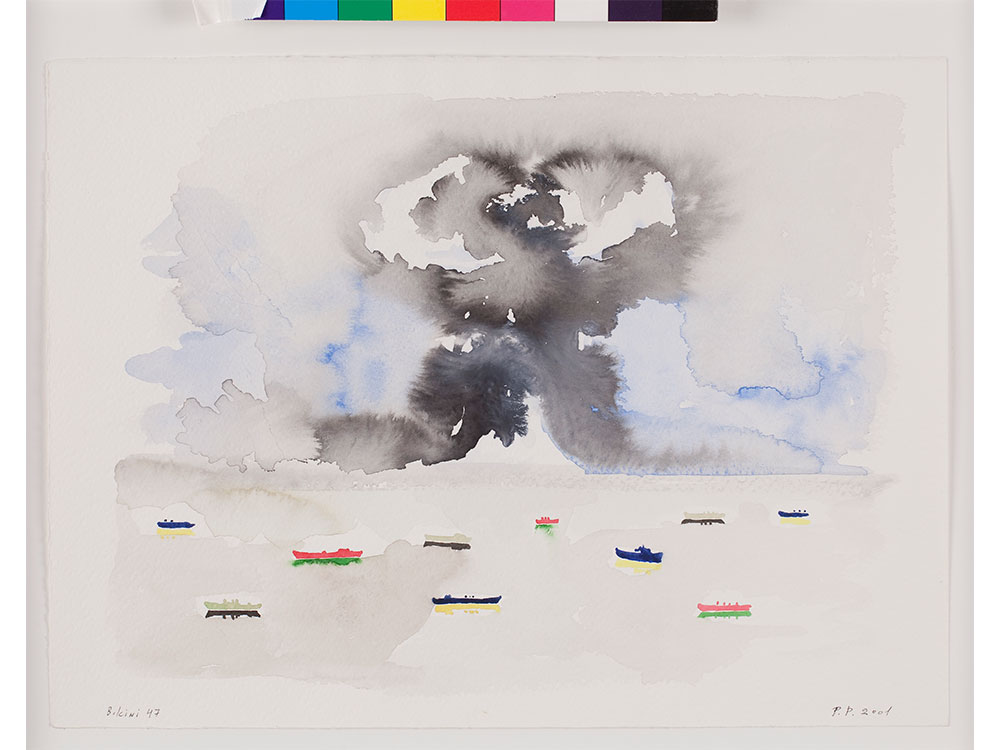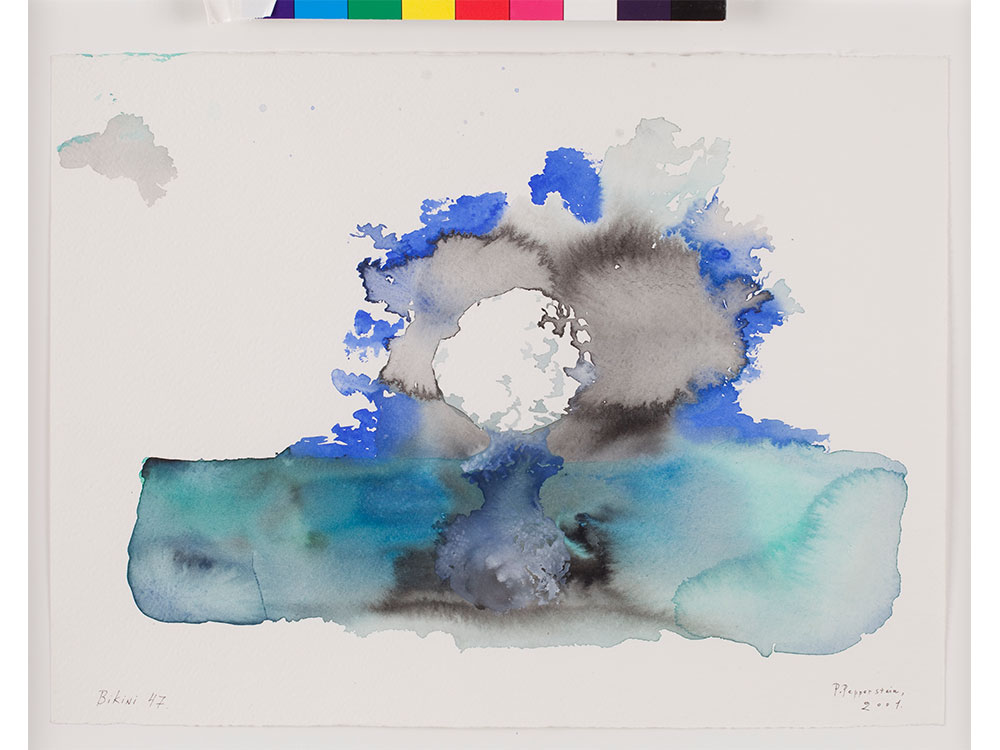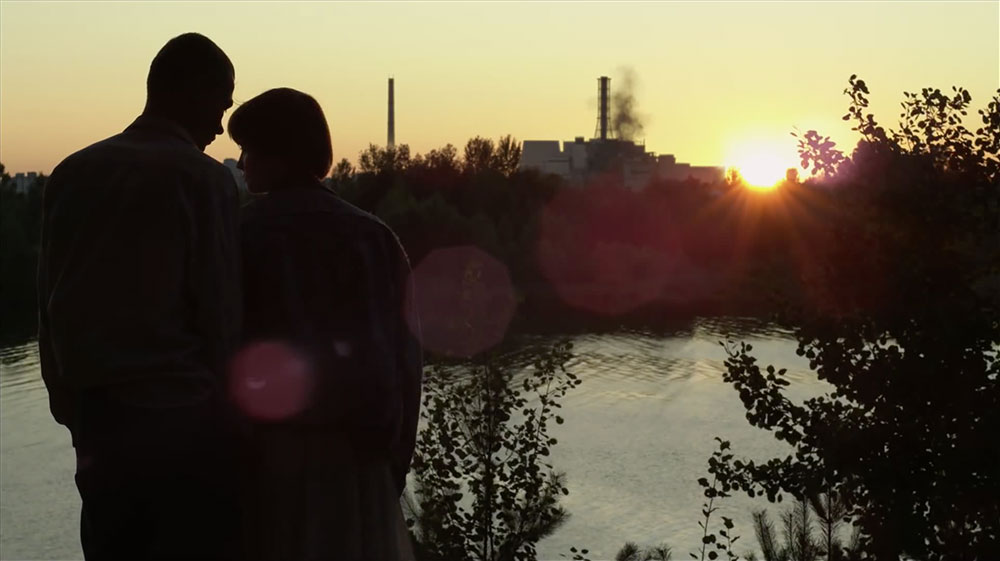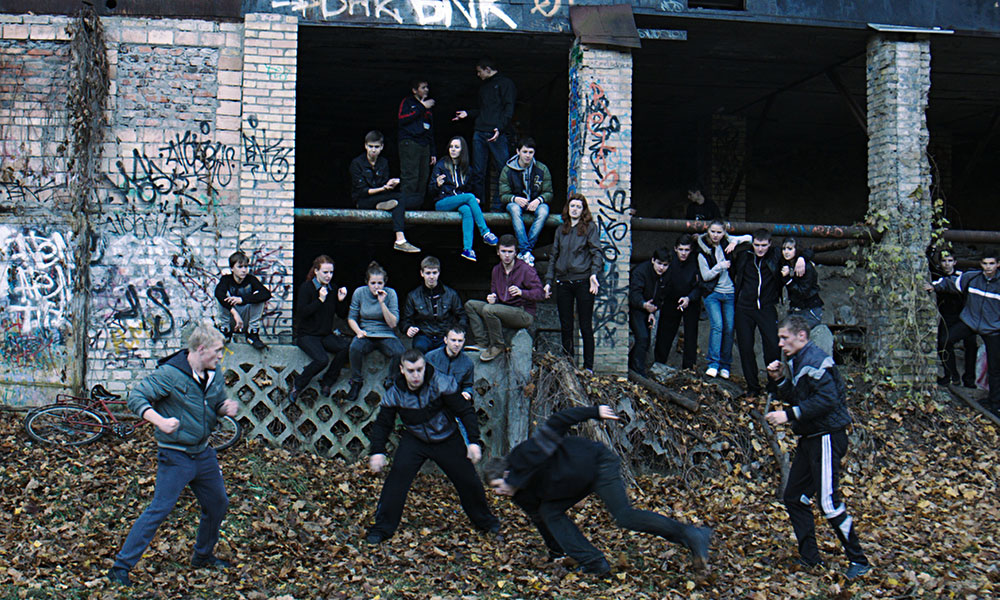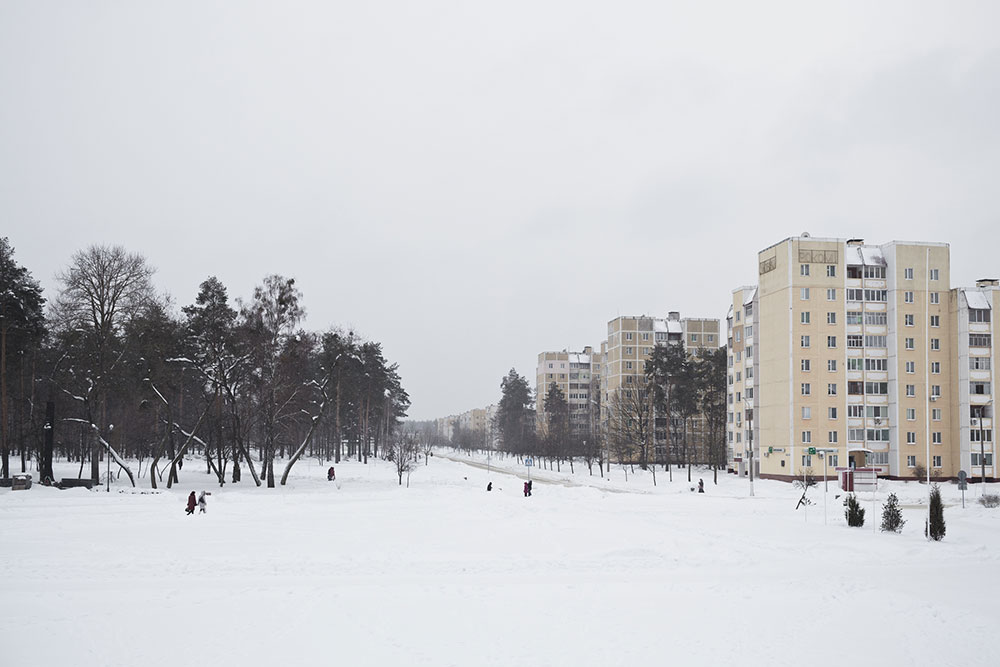Aftermath: three decades on, Russia’s artists are still dealing with the fallout from Chernobyl
ChernobylThe threat of technology still lingers in post-Soviet art
During the Cold War, awareness of the atomic threat was everywhere in Russia: in pop songs, poems and art. Nothing embodies technology’s threat and promise to mankind so well as atomic weapons (and atomic power stations like Chernobyl). For a generation of Russian artists, atomic apocalypse was a metaphor for the emptiness beneath the banality of everyday life. With a long history of millenarian doomsday predictions anchored in religiosity, the atomic threat and the artworks that it seemed to motivate allowed for a contemporary update of a very old and very Russian fatalism.
Kazimir Malevich, Black Suprematic Square (1915)
Atomic weapons are, and were, a synecdoche for distrust of the modern world
In recent years, curator and art historian Boris Groys has resurrected the work of Nikolai Fedorov, the Russian cosmist whose work, although rooted in Christianity, was nonetheless radically modern. Assigning to science the goal of discovering the means for immortality, Groys interprets his work as positioning art and art museums as the means to this end, forever preserving humanity in fragments. The urge to universal salvation through technology, epitomised by nuclear power, was paralleled by avant-garde representations of the void that science might be leading us towards. Kazemir Malevich’s Black Square is an end to everything: art, humanity, representation (of course, it was in fact the beginning for Russian modern art). Art and philosophy at the inception of Russian modernity were obsessed with technology — the means to improve the self, to compete, to master the world — but a gloomy awareness of the destructive possibility of this power was always immanent. In Malevich’s opera Victory Over The Sun, society adopts the shared goal of destroying the sun; via collective organisation and the harnessing of technology, they succeed, only to seal their own destruction. These modernists, obsessed with a total break with the past, nonetheless seem to be echoing the warnings of Russian mystics, misfits and hermits from all eras.
These preoccupations with technology’s power to destroy the homeland, to sever our bond with it, came to a head in the era of the nuclear threat. Consider conceptualist Erik Bulatov’s Caution, one of his best known works. A bucolic landscape; a flowing river — this is the motherland we all carry in our minds, a platonic ideal, overlaid by a warning which is vague and brief. There’s something wrong here, Bulatov is saying: be careful, for all is not what it seems. Of course, this could be interpreted in any number of ways; but what is interesting is the way that atomic weapons are, and were, a synecdoche for distrust of the modern world (including the Soviet state and system) more generally.
Boris Orlov’s Contours of Time series satirised the self-important grandiosity of the Soviet military elite. Orlov’s images, which the artist declared to be parallel to Kabakov’s depictions of shabby Soviet interiors, fatuously proclaimed the glory of the Soviet military state, — “Upper Volta with rockets”, as Helmut Schmidt famously described it — wrapping up bombs and missiles in the ideological symbols of the regime. Critically, these works were created after the Chernobyl explosion already happened; to allude to the force of Russia with nuclear weapons was already to make a bitter, ironic joke. Indeed, Chernobyl was, along with the war in Afghanistan, one of the critical events that eliminated the sense of Soviet might among the population.
To be frightened by the possibility of atomic apocalypse is to express uncertainty about humanity’s use of instrumental reason, and to express foreboding that our experiment of remaking the world might go awry. In Volodymyr Pasivenko and Volodymyr Pryadka’s mural in the National Library of Ukraine, the entire mortal coil is depicted, echoing traditional icon formats — but with contemporary subjects. The atomic explosion which dominates the top-right corner of the mural is more than an expression of nuclear threat: it is a critique of modernity, of how we have divorced ourselves so thoroughly from the natural and traditional way of life that it should even be possible to have a weapon so great. The age-old Russian worry that we have detached ourselves from the land was given new urgency in the context of nuclear standoff. In Andrei Tarkovksy’s films, particularly Stalker, the same feeling of ominous foreboding attaches itself to landscapes otherwise serene and beautiful. This refusal to believe one’s eyes, a sense that something in the world is awfully wrong, is a way of understanding the possibility of imminent apocalypse. If Russian art, past and present, has often been addressed to a mystical and imagined homeland, the sense of alienation caused by urbanism, technology, and mass society has been all the more acute and painful, as Tarkovsky’s elegiac works highlight so clearly.
In Andrei Tarkovksy’s films, particularly Stalker, the same feeling of ominous foreboding attaches itself to landscapes otherwise serene and beautiful
If artists such as Bulatov, Orlov and Tarkovsky referred to a world that seemed to be in danger of cracking up, their heirs have worked entirely in a world that is post-apocalyptic; the invincible state with its military might that artists had once railed against shifted from object of enmity to object of nostalgia, or, as Pelevin wrote in his first novel, [the artist] realised something else too: the eternity he used to believe in could only exist on state subsidies, or else — which is just the same thing — as something forbidden by the state.
Art continues to ask painful questions of whether our technological society is capable of controlling the forces it has unleashed
From Pavel Pepperstein’s Bikini 47 to Leonid Tishkov’s Homemade Atomic Bomb, artists have responded to the nuclear terror with the aesthetic means that they knew best. While Pepperstein’s dreamy watercolours aestheticised catastrophe, Tishkov, who grew up in Chelyabinsk in the fallout zone of the 1957 Kyshtym nuclear accident, had his mother crochet a mushroom cloud, injecting the contemporary into timeless traditions. The Chernobyl explosion in 1986 confirmed that the danger of Soviet nuclear power wasn’t necessarily to be found in war, but rather in incompetent management: not the cruelty of man, but the fecklessness. The greatest and most direct response in Russia to the nuclear aftermath, however, might be American artist Taryn Simon’s work Black Square XVII, part of her current show at Garage in Moscow and the fruit of a unique collaboration with the Russian nuclear agency ROSATOM. Simon created a void in the gallery wall of the same dimensions as a piece of nuclear waste that she co-created with ROSATOM. The cube of nuclear waste, buried in a secure site outside of Moscow, won’t be visible to humans for 999 years, a timeframe that forces us to ask if anybody will still be around to see it at that time. Art continues to ask painful questions of whether our technological society is capable of controlling the forces it has unleashed.
As in the high tide of nuclear fright, nuclear weapons or meltdowns always symbolise more than they are: they are a sort of hieroglyph which communicates the fright we have of the world itself, the unknowability of the cosmos and of our own destructive capabilities. Perhaps what makes Russian art truly Russian is an engagement with the physical geographies of Russia herself; in the era after Chernobyl, the Russian lands have forever been touched by the nuclear threat, and perhaps so has Russian consciousness as well.
